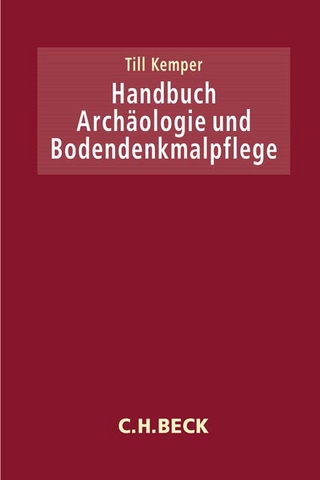
The Usage of Ochre at the Verge of Neolithisation from the Near East to the Carpathian Basin
Archaeopress Archaeology (Verlag)
978-1-80327-336-5 (ISBN)
The Usage of Ochre at the Verge of Neolithisation from the Near East to the Carpathian Basin explores the cultural meaning of ochre among the societies of the Late Epipalaeolithic/Mesolithic and the Early Neolithic from the Levant to the Carpathian Basin.
Firstly, the book attempts an accurate characterization of the material, ochre. Both its features as well as its possible outcrops and co-occurring minerals are outlined. The cultural background is described, in particular underlining the continuation of chosen elements and the visible dichotomy between sacral and profane areas of ochre application. On that basis it proved possible to discuss the meanings of ochre, underscored by that division. The discussion also focuses on the possibility of matching archaeological and natural samples. This in turn would allow the creation of a map of interconnections between societies and/or outcrops. To that end the project employed geochemical methods, such as SEM, EDS and a trial study with Raman spectroscopy. The main results demonstrate the possibility of ochre characterization based on laboratory results and the visible interconnections between Epipalaeolithic/Mesolithic and Neolithic societies.
Julia Kościuk-Załupka gained her PhD from the Jagiellonian University, Cracow. She directed the project on ochre utilization at the verge of the Neolithic, of which this book is the result, financed by the Polish MInistry of Science and Higher Education. She has been an active participant in many projects. Her major interests refer to the Stone Age, with special focus on tools and techniques.
1. Introduction ;
Purpose of the work ;
Territorial range ;
Chronological range ;
Bibliographical review ;
Review of the material sources ;
Methodological framework ;
2. Ochre ;
The definition of ochre and its characteristics ;
Natural occurrence of mineral components of ochre ;
Other ochre components ;
Methods of ochre analysis ;
Analytical procedures in ochre studies: main expectations ;
3. Cultural Background with Particular Consideration of Neolithisation Processes and Interregional Contacts. The Question of a Sacred-Profane Dichotomy ;
The Levant ;
Anatolia ;
The Balkan Peninsula and Southern Carpathian Basin ;
Northern and Eastern Carpathian Basin ;
4. Contexts of Ochre Finds in Archaeological Layers ;
5. Ethnographic Analogies for Ochre Application ;
6. Ochre in the Neolithic Transformations from the Levant to the Carpathian Basin ;
Levant ;
Anatolia ;
The Balkan Peninsula and Southern Carpathian Basin ;
Northern and Eastern Carpathian Basin ;
Summary ;
7. Ochre Outcrops on the Terrains under Investigation ;
The Levant ;
Anatolia ;
The Balkan Peninsula ;
Carpathian Basin ;
8. Analysis of Ochre Samples ;
Methodological approach ;
Israel ;
Turkey ;
Bulgaria ;
Romania ;
Hungary ;
Slovakia ;
Discussion ;
9. The Meaning of Ochre in Societies on the Verge of Neolithisation ;
10. Conclusions ;
11. Bibliography ;
Appendix 1. Catalogue of Archaeological Sites ;
Appendix 2. Catalogue of Natural Ochre Outcrops ;
Links to Online Appendices ;
Appendix 3. Catalogue of Ochre Samples ;
Appendix 4. Catalogue of EDS Studies ;
Appendix 5. Plates
| Erscheinungsdatum | 22.03.2023 |
|---|---|
| Zusatzinfo | 30 figures, 8 tables (colour throughout) |
| Verlagsort | Oxford |
| Sprache | englisch |
| Maße | 205 x 290 mm |
| Gewicht | 839 g |
| Themenwelt | Geisteswissenschaften ► Archäologie |
| ISBN-10 | 1-80327-336-4 / 1803273364 |
| ISBN-13 | 978-1-80327-336-5 / 9781803273365 |
| Zustand | Neuware |
| Informationen gemäß Produktsicherheitsverordnung (GPSR) | |
| Haben Sie eine Frage zum Produkt? |
aus dem Bereich


